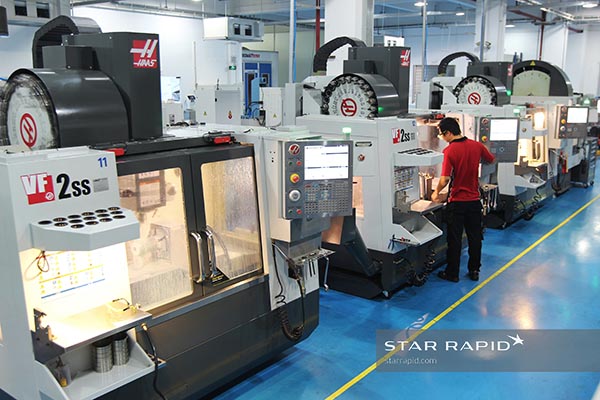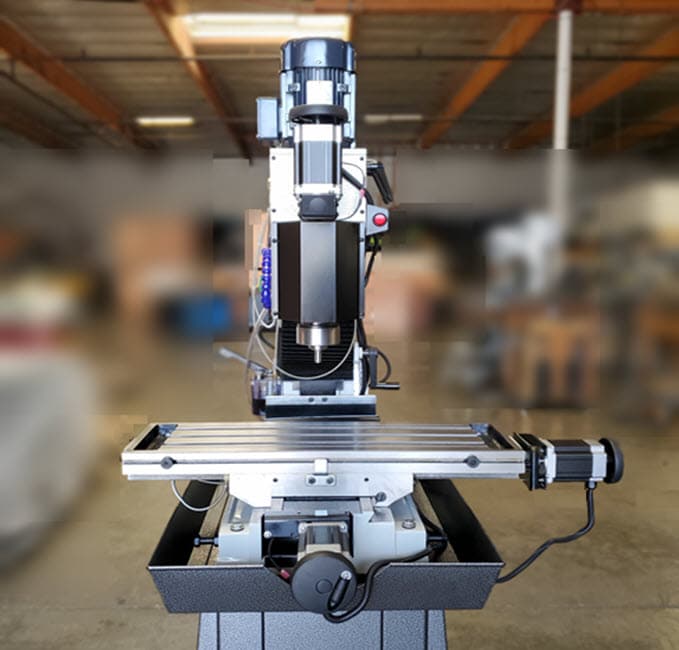Table of Contents
Haas CNC mills are known for their precision and accuracy in manufacturing processes. One of the most common questions asked about these machines is how many parts they consist of. The answer to this question is not a simple one, as Haas CNC mills are made up of several components that work together to produce high-quality results.
Firstly, Haas CNC mills are composed of a machine base, which serves as the foundation for the entire machine. The base is made of high-quality materials that ensure stability and durability during operation. Additionally, the machine consists of various mechanical and electrical components, such as the spindle, tool changer, and control panel, which all work together to ensure precision and accuracy in the manufacturing process. Understanding the various parts of a Haas CNC mill is essential in maximizing its potential and achieving the best possible results.
A Haas CNC mill consists of four main parts: the machine base, the column and saddle, the spindle and toolchanger, and the control system. Each of these parts plays a crucial role in the milling process. The machine base provides a stable platform for the entire machine, while the column and saddle support the spindle and toolchanger. The spindle rotates the cutting tool, and the toolchanger automatically changes tools as needed. Finally, the control system manages all of the machine’s functions and movements.
How Many Parts for Haas CNC Mill?
When it comes to Haas CNC mills, there are a variety of parts that make up the machine. Understanding the different parts and their functions is essential for anyone looking to operate, maintain or repair these machines. In this article, we will take a closer look at the various parts that make up the Haas CNC mill.
1. Spindle
The spindle is the heart of the Haas CNC mill. It is responsible for holding and rotating the cutting tool. The spindle is powered by an electric motor and can spin at varying speeds depending on the material being cut. The spindle is also responsible for controlling the vertical movement of the cutting tool.
To ensure the longevity of the spindle, it is important to keep it lubricated at all times. Proper lubrication will help reduce wear and tear on the spindle and prevent it from overheating.
2. Control Panel
The control panel is the brain of the Haas CNC mill. It is responsible for controlling all the different functions of the machine, including the movement of the cutting tool, the speed of the spindle, and the coolant system. The control panel is typically located near the front of the machine and features a variety of buttons, dials, and displays.
The control panel is designed to be user-friendly and easy to navigate. However, it is important to have a thorough understanding of the different functions and settings in order to operate the machine effectively.
3. Axis
The axis is the system responsible for moving the cutting tool along the x, y and z axes. Most Haas CNC mills have three or more axes, allowing for precise and accurate cutting. The axis system is typically controlled by the computer software running on the machine.
It is important to keep the axis system clean and properly lubricated in order to prevent damage and ensure accurate movement.
4. Cutting Tool
The cutting tool is the component responsible for physically cutting the material being worked on. There are a variety of different cutting tools available, each designed for specific materials and cutting techniques.
It is important to select the appropriate cutting tool for the job at hand in order to achieve the desired results. Additionally, it is important to keep the cutting tool sharp and properly maintained in order to prevent damage to the material being cut and the machine itself.
5. Coolant System
The coolant system is responsible for keeping the cutting tool and material cool during the cutting process. This helps prevent overheating and damage to the machine and the material being cut. The coolant system typically consists of a pump, hoses, and nozzles.
It is important to properly maintain the coolant system in order to ensure it is functioning properly. This includes regularly changing the coolant, cleaning the system, and checking for leaks.
6. Workholding
Workholding refers to the system used to hold the material being cut in place. There are a variety of different workholding systems available, including clamps, vises, and chucks.
It is important to select the appropriate workholding system for the job at hand in order to ensure the material is held securely in place during the cutting process.
7. Chip Removal System
The chip removal system is responsible for removing chips and debris from the cutting area during the cutting process. This helps prevent damage to the material being cut and the machine itself.
There are a variety of different chip removal systems available, including conveyor belts and augers. It is important to select the appropriate chip removal system for the job at hand in order to ensure it is functioning properly.
8. Power Supply
The power supply is responsible for providing the electrical power needed to operate the Haas CNC mill. The power supply typically consists of a transformer and a power distribution unit.
It is important to ensure the power supply is properly grounded and connected in order to prevent damage to the machine and ensure safe operation.
9. Lubrication System
The lubrication system is responsible for keeping the various moving parts of the Haas CNC mill properly lubricated. This helps reduce wear and tear on the machine and prevent damage.
Most Haas CNC mills feature an automatic lubrication system that is designed to keep the machine properly lubricated at all times. It is important to regularly check the lubrication system and refill it as needed.
10. Safety Features
Haas CNC mills are designed with a variety of safety features to protect the operator and prevent damage to the machine. These safety features typically include emergency stop buttons, safety shields, and warning lights.
It is important to familiarize yourself with the different safety features of the machine and use them appropriately to ensure safe operation. Additionally, it is important to regularly inspect the safety features and replace any damaged or worn components.
In conclusion, the Haas CNC mill is a complex machine made up of a variety of different parts. Understanding the function of each part is essential for anyone looking to operate, maintain, or repair these machines. By following proper maintenance procedures and utilizing the various safety features, you can ensure safe and efficient operation of your Haas CNC mill.
Freequently Asked Questions
In the world of CNC machining, Haas CNC mills are widely used by professionals. One of the most common questions about these machines is how many parts they have. Let’s explore this topic further by answering some frequently asked questions.
What are the main parts of a Haas CNC mill?
A Haas CNC mill has several main parts that are essential for its operation. The first is the control panel, which allows the operator to control the machine’s movements and functions. The second is the spindle, which holds the cutting tool and rotates it at high speeds. The third is the worktable, which holds the material being machined and moves in three dimensions to make precise cuts. Finally, the machine also has various motors, sensors, and other components that work together to ensure smooth and accurate machining.
Each of these parts is crucial to the machine’s overall performance, and they must be maintained and serviced regularly to ensure optimal results. A failure in any of these parts could result in poor cuts, damaged equipment, and lost time and money.
How many axes does a Haas CNC mill have?
A Haas CNC mill typically has three to five axes, depending on the model. The most basic models have three axes, which allow for movement in the X, Y, and Z directions. More advanced models may have additional axes, such as A and B, which allow for rotary and tilt movements. These extra axes give the machine greater flexibility and precision, making it capable of more complex and intricate cuts.
Each axis is controlled by a separate motor and can move independently of the others. This allows the machine to make precise cuts at any angle or orientation, resulting in high-quality finished products.
What is the function of the coolant system in a Haas CNC mill?
The coolant system in a Haas CNC mill serves several essential functions. First, it cools the cutting tool and workpiece, reducing the risk of overheating and prolonging the life of the tool. Second, it lubricates the cutting tool, reducing friction and improving the quality of the cut. Finally, it helps to wash away chips and other debris that can accumulate during the cutting process, keeping the work area clean and safe.
The coolant system typically consists of a tank, pump, and nozzles that spray the coolant onto the tool and workpiece. The operator can adjust the flow rate and pressure of the coolant to suit the specific needs of the job, ensuring optimal results.
What is the maximum spindle speed of a Haas CNC mill?
The maximum spindle speed of a Haas CNC mill varies depending on the model and configuration. However, most models are capable of speeds between 8,000 and 12,000 RPM (revolutions per minute). Some high-speed models can reach speeds of up to 18,000 RPM or more.
The spindle speed is an important factor in the machine’s cutting performance, as it determines how fast the cutting tool rotates. Higher spindle speeds generally result in faster and smoother cuts, but they also require more power and may produce more heat. The operator must balance the speed with other factors, such as the material being machined and the size of the cutting tool, to achieve the best results.
What is the maximum weight capacity of a Haas CNC mill?
The maximum weight capacity of a Haas CNC mill depends on the model and configuration. However, most models can handle weights between 1,000 and 10,000 pounds or more. The weight capacity is an important consideration when selecting a machine, as it determines the size and type of materials that can be machined.
The weight capacity is determined by several factors, including the strength of the machine’s frame, the size of the worktable, and the power of the motors. It is important to choose a machine with a weight capacity that meets the needs of the job to ensure safe and efficient operation.
In conclusion, the number of parts for a Haas CNC mill can vary depending on the specific model and configuration. However, most Haas CNC mills consist of several key components, including the control panel, spindle, tool changer, and cutting tool. These components work together seamlessly to provide precise and efficient machining capabilities.
It’s important to note that the number of parts isn’t the only factor that determines the performance of a Haas CNC mill. Other factors, such as the quality of the materials used and the skill of the operator, can also play a significant role in achieving optimal results.
Overall, whether you’re a seasoned machinist or a beginner, a Haas CNC mill can be an excellent investment for your machining needs. By understanding the different parts that make up this powerful machine, you can make informed decisions about which model and configuration is right for you.
Request a quote today!
[contact-form-7 id="1578" title="Contact form"]
Please compress the file into a ZIP or RAR file before uploading. Alternatively, send through your RFQ by email.
enquires@unitymanufacture.com





